The glorious religious architecture dominates the skyline of modern Lviv. The city has over 100 churches and it's all too easy to overdose on ornate interiors and golden iconostases. Our web destinations.com.ua rounded up the most famous and the most beautiful religious architecture of Lviv.
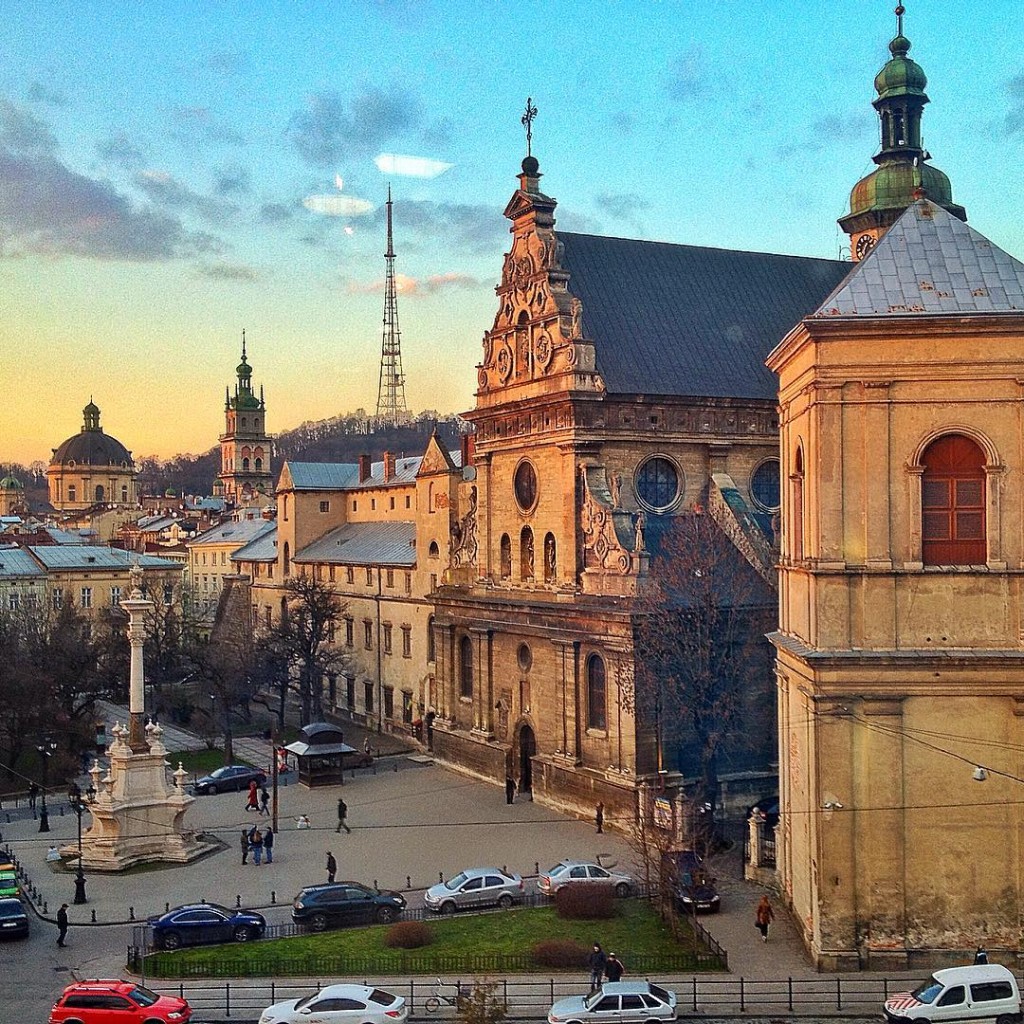
Read: Kyiv Most Beautiful Temples
Locals call this bernardine church in Lviv St. Andrew’s Church. Located in the heart of the city, this is a medieval complex of the former Bernardine Monastery with the gorgeous Catholic Church. Bernardine monks came to Lviv in the 15th century and built small wooden temple outside the town walls. They started building monastery around it, but the cloister was soon burnt down by Orthodox believers, who were against missionary activity of the western monks. In the early 17th century, by approbation and under protection of the Polish King Sigismund III, Bernardines started building a new - this time stone - monastic complex. Elegant 38-meter high bell tower adjoins the church.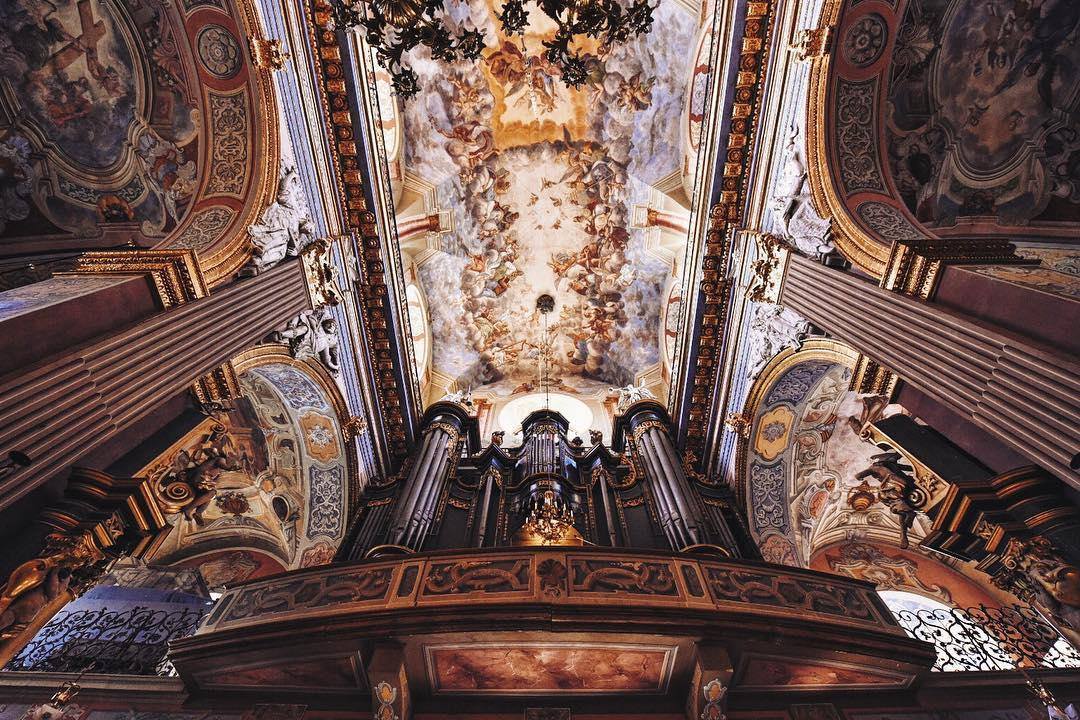
It was designed by local monk, and built consecutively by three architects. Therefore, several styles interwove in temple's appearance, with Italian Renaissance being the dominant one. Temple's facade is decorated by figures of Bernardine order's main saints, and by sculptures of Mother of God and Apostles Peter and Andrew. Catholic Church's interior is also exquisitely decorated. It is carried out in baroque style and is notable for ornamental forms. 18th century's wooden altars and skillful wall paintings, made by talented artists of that time, are well preserved till our days.
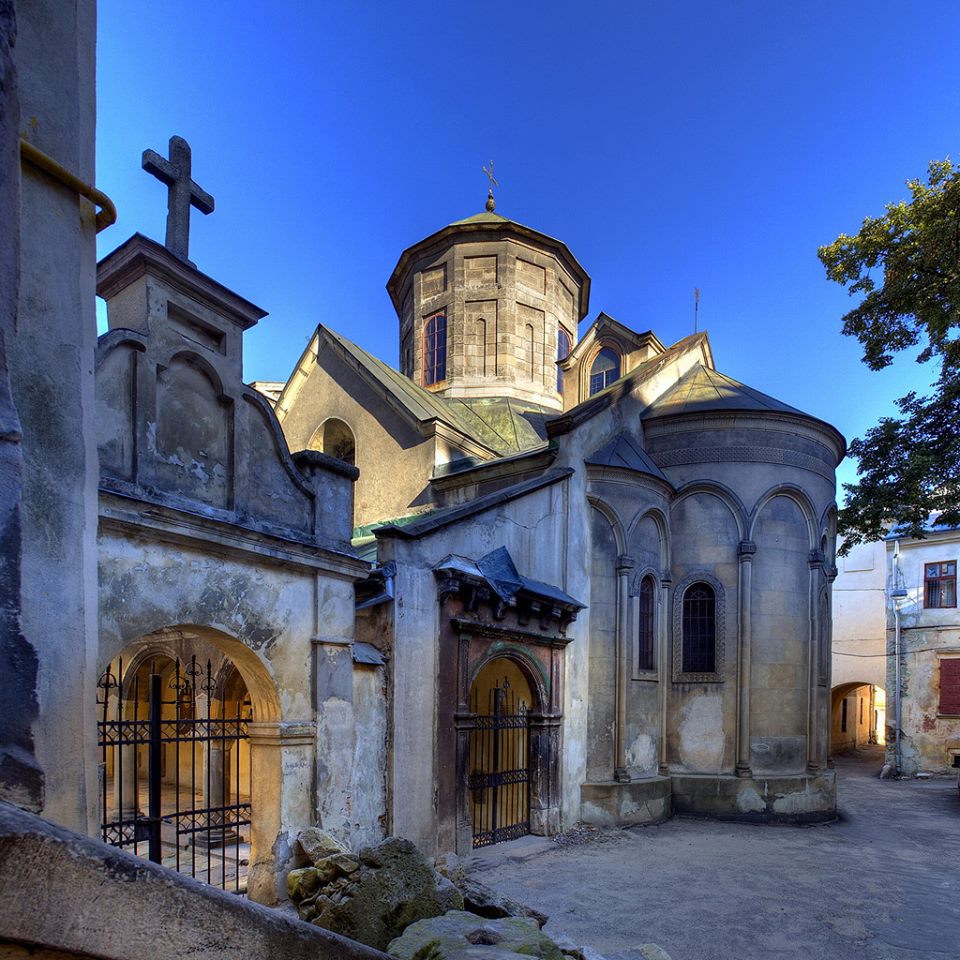
Armenian Cathedral of the Assumption of Mary in the city of Lviv is an elegant, built in 1363 temple. The placid cathedral courtyard is a maze of arched passageways and squat buildings festooned with intricate Caucasian detail. Stepping into the courtyard feels like entering another era. Outside, quaint, cobbled Virmenska street was once the heart of the old Armenian ('Virmenska' in Ukrainian) quarter.
This original building perished in the fire of 1527. The structure that stands today blends a few architectural styles including Old Russian, Gothic and Armenian. The original bell tower was erected in 1571, but was later toppled by the Turks during a siege. The 19th century version of the bell tower is a restoration of the original. The courtyard provides a tranquil setting for the decorative column and figure of St. Christopher. The neighboring buildings are those of a former Armenian bank, established in the 17th century, and Lviv’s oldest pawnshop.
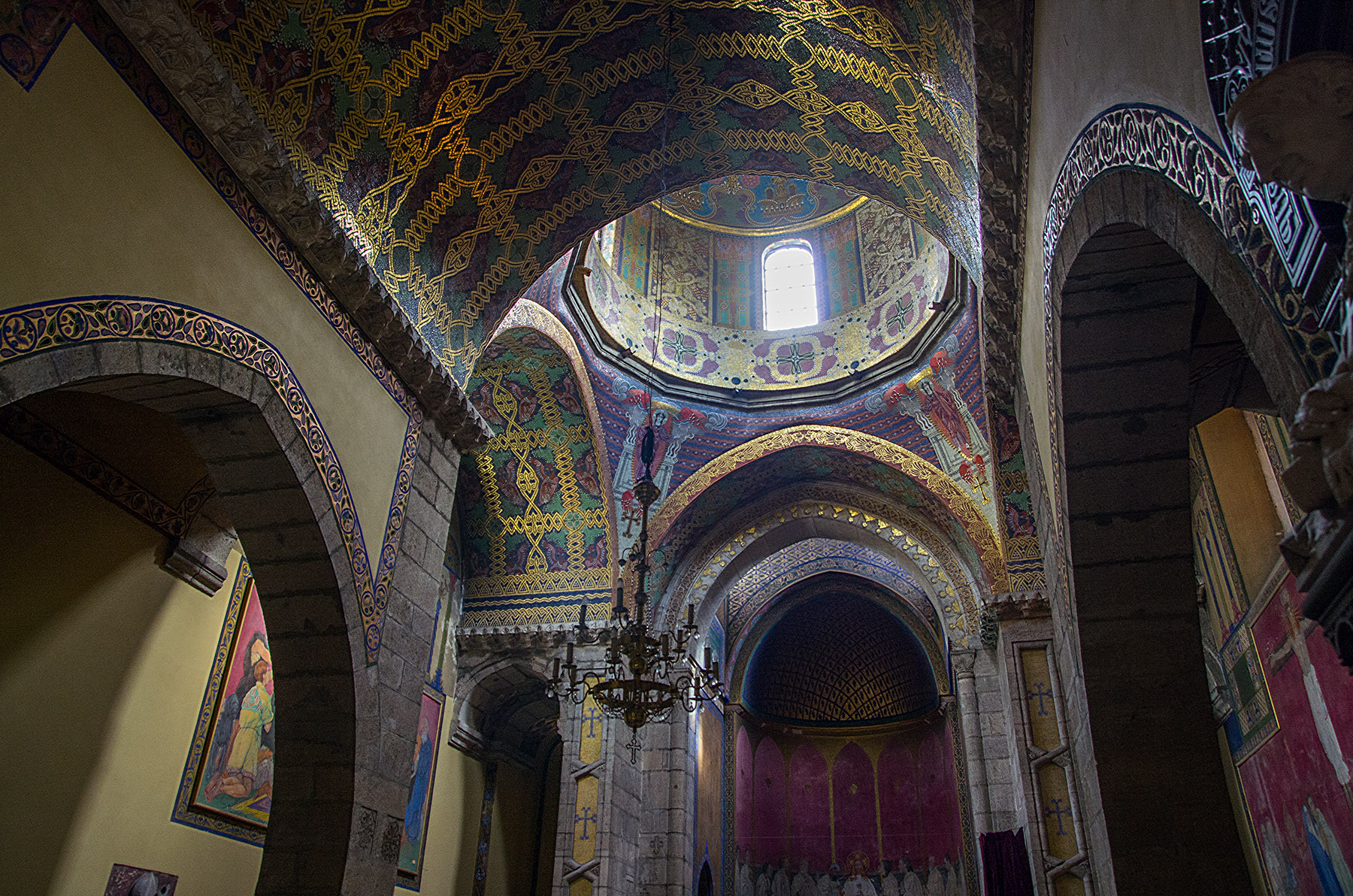
St. Peter and Paul Jesuit Cathedral is majestically standing in the very heart of the historic Lviv and is one of the town's largest and most important sacral buildings. Jesuits - the representatives of the most influential Catholic monastic Order who were always famous for their education - came to Lviv in the late 16th century and built a small wooden church several years later. However, the modest temple didn't meet the monks' main requirement - to strengthen the prestige of the Order and to impress the idea of Catholic Church's power on the local congregation. And, therefore, the Jesuit monks decided to build a new grandiose cathedral in Lviv that would strike with its size and grandeur.

The Cathedral was one of the first Baroque buildings in Lviv and amazed the locals not only with its majesty, but also with its impressive size: 41 meters long, 22 meters wide and 26 meters high. The main facade was adorned with niches having statues of Jesuit saints installed in them and with numerous ornamentations. In the year 1701, the tallest tower in the city was adjoined to the church and later, a clock was installed on it.
The Jesuit St. Peter and Paul Cathedral is also famous for being the most enigmatic temple in Lviv: this status was ensured by the intricate web of the mysterious dungeons which served as shelters during gruesome war times. Today the part pf the dungeons can be visited with a guided tour.

The elegant neo-Gothic Church of St. Elizabeth that pierces the sky with sharp spires is the first to greet Lviv guests arriving at the train station. It is one of the Lviv most admirable and fascinating monuments and is rightly considered city's trademark for over a century. The Catholic Church was built in the early 20th century and named in honor of the wife of Austrian Emperor Franz Josef I - people's favorite Empress Elizabeth. The architecture of the Church of St. Elizabeth embodies the best traditions on the Gothic style that harmonically interweave with the elements of the Roman style - peaked spires extending upward, tracery lancet windows, portal with a large rose in the center. The entrance to the cathedral is decorated with the sculpture, created by famous sculptor Peter Voitovich whose works adorn many religious buildings in Lviv.
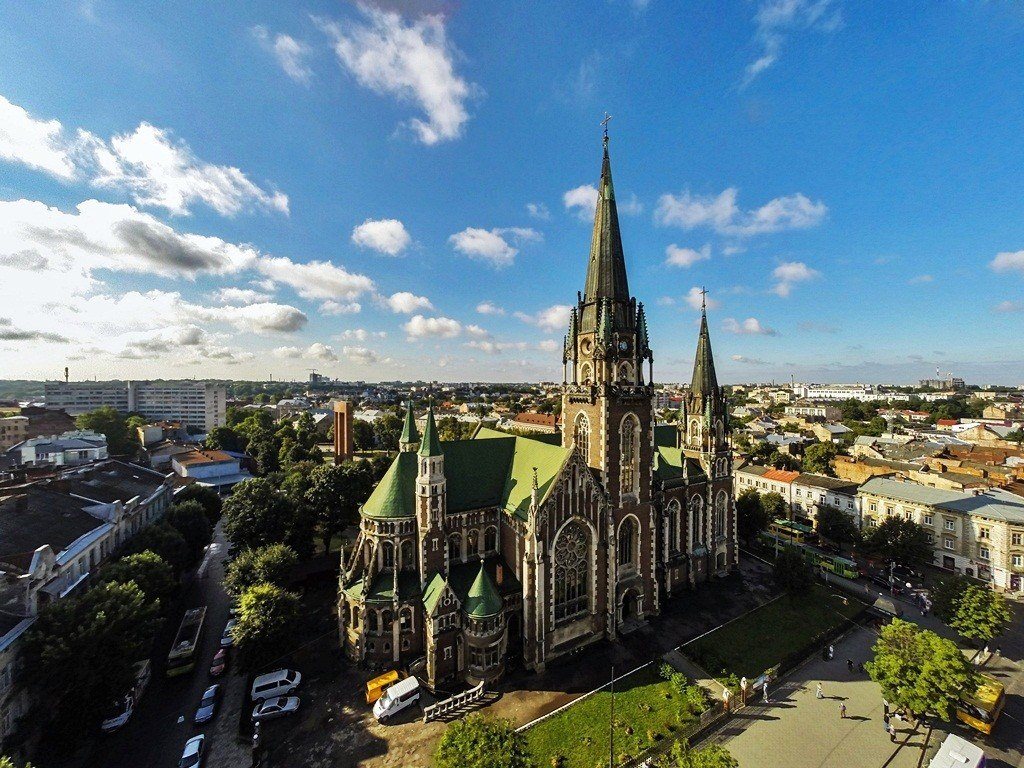
The most severe period of decline for the Cathedral of St. Elizabeth fell on Soviet times. In 1946, it was closed and continued crumbling, and thirty years later the church was turned into warehouse. The temple started to revive only in the late twentieth century, when it passed to the Ukrainian Greek Catholic Church. At the same time, it was renamed into the Church of Sts. Olha and Elizabeth and became one of the most attractive sights of Lviv.
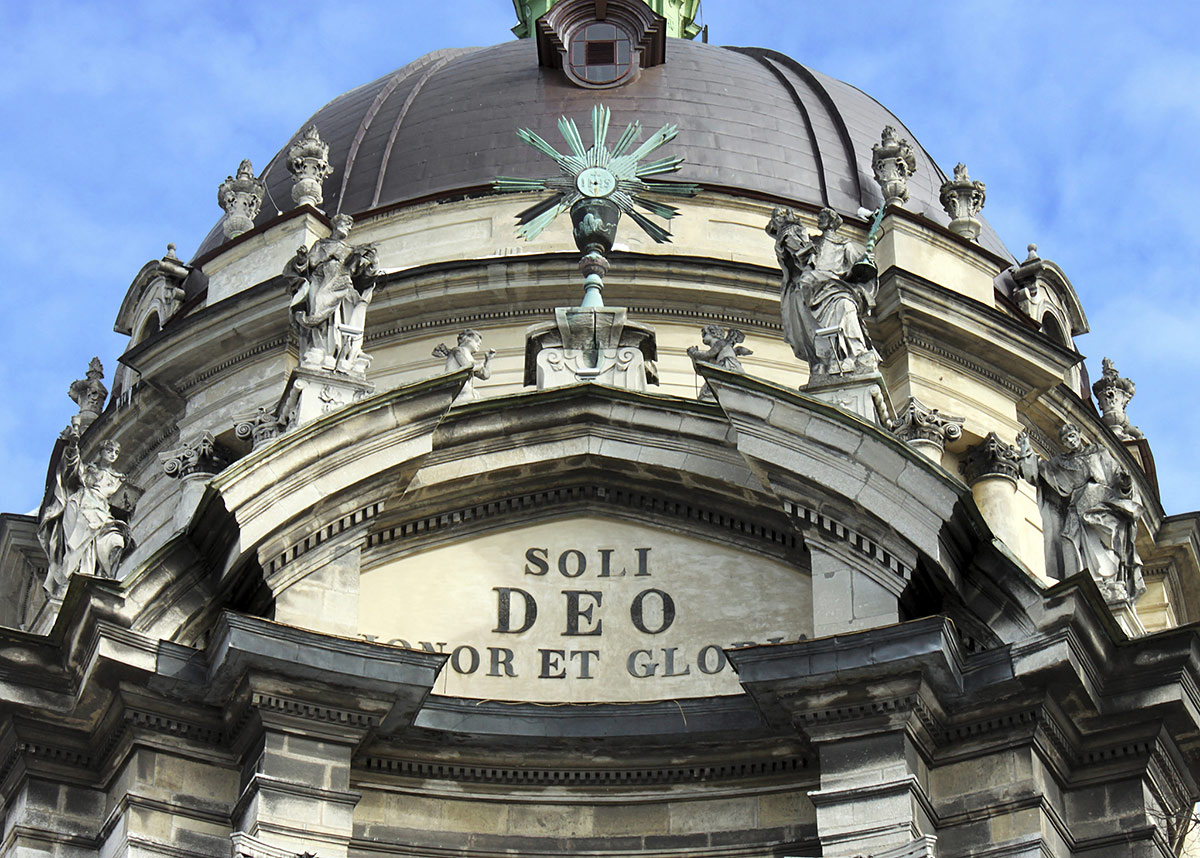
The foundation of the Dominican Cathedral in Lviv dates back to the second half of the 13th century. In 1612 it become the central monastery of the Eastern European Dominican Order. The present appearance of the cathedral was designed by architect Jan de Witte. The bell tower was constructed in 1865. During the Soviet era the site was used as a regional archive and as a school for would be printing workers. After restoration in 1972 the Dominican Monastery opened as a museum dedicated to the history of religion and atheism; the atheists have since left the building. Religious services have also resumed.
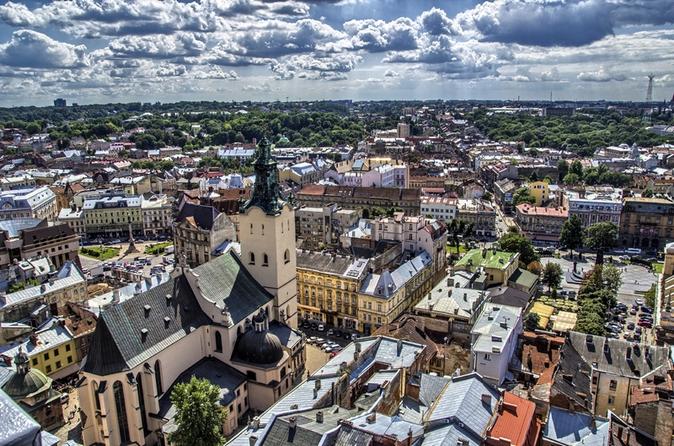
With various chunks dating from between 1370 and 1480, this functioning Latin Cathedral is one of Lviv’s most impressive churches. The exterior is most definitely Gothic, while the heavily gilded interior, one of the city’s highlights, has a more baroque feel, with colorfully wreathed pillars hoisting frescoed vaulting and mysterious side chapels glowing in candlelit half-light. Services are in four languages, including English.
Read: Attractions in Lviv
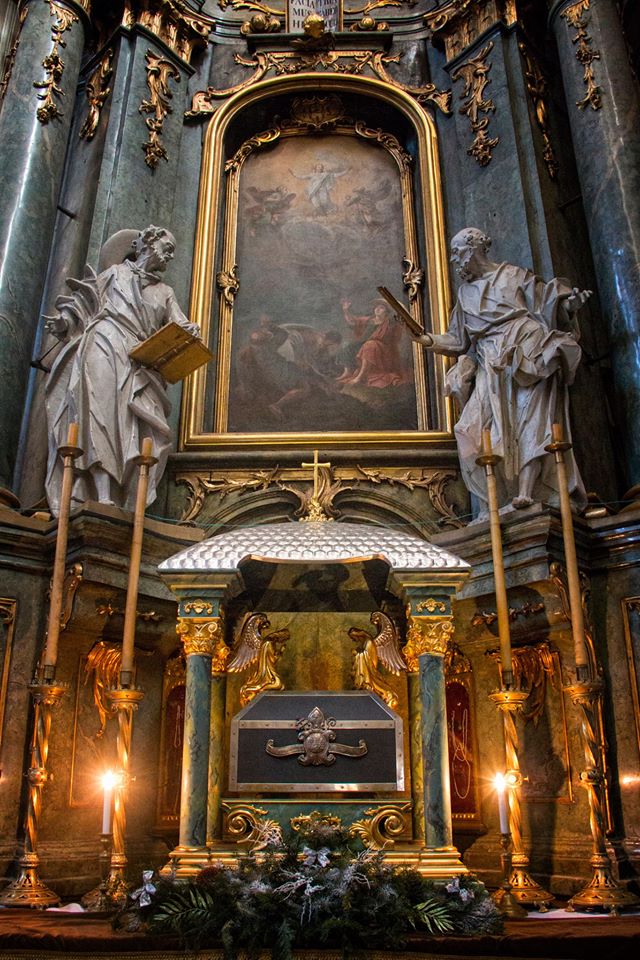
If you walk around the cathedral, you'll eventually come to a relief of Pope John Paul II, erected to commemorate his visit to Lviv in 2001.
Photo source: inlviv.in.ua (photos by Valeriya Sivakova, Krzysztof Szlezak, Oleh Voznyy, Ihor Shapoval, Yuriy Tatarenko), skyscrapercity.com. All images belong to their rightful owners.







